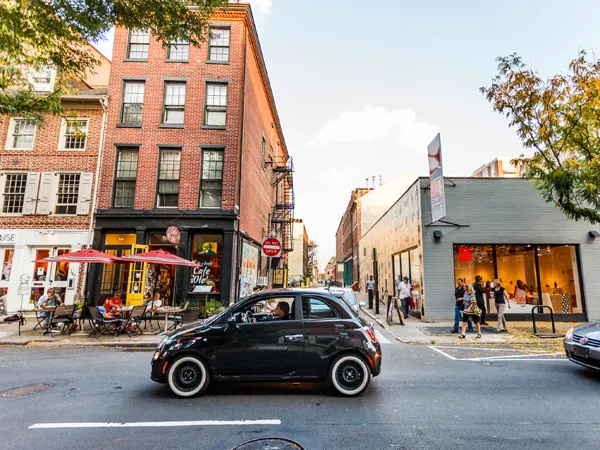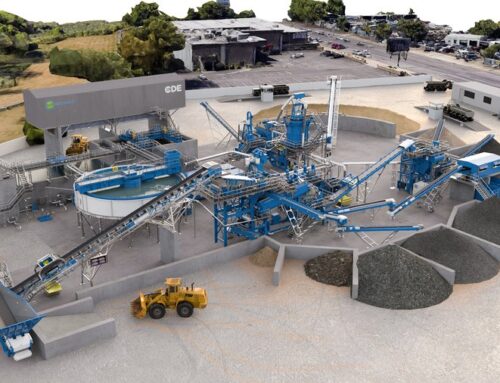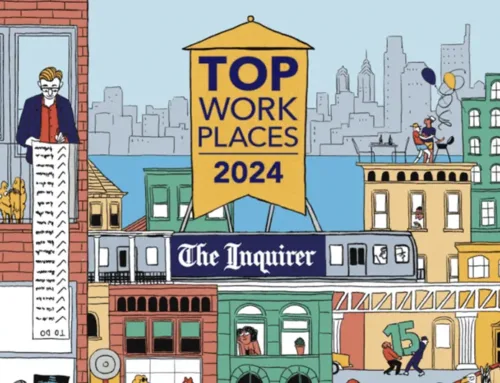Robert Wright for The New York Times
It is a peculiar quality of the district here called Old City that the proprietors of many of its galleries and shops complain about the floors.
They slant.
“It’s always been a problem for us,” said Robert Aibel, the owner of Moderne, a vintage furniture gallery at 111 North Third Street. But “most people don’t notice, unless a piece of furniture looks crooked.”
At the Roche Bobois showroom, at 313 Arch Street, Natalie Suresch, the manager, said the floors tilt four feet from back to front. “You feel like you have vertigo,” she said.
Such are the wages of historicism.
Old City, the home of Benjamin Franklin and Betsy Ross and the temporary residence of George Washington before he moved south, was the kernel from which the rest of Philadelphia grew. Established in the late 17th century by William Penn, this area on the Delaware River evolved into a prosperous 19th-century manufacturing center and then declined into a 20th-century derelict port.
Things took a turn for the better around 1976, the year of the Bicentennial, when interest flared up in Philadelphia’s federal past. “There was a sense of a reconnecting with the earliest history of the city,” said Nathaniel Popkin, a local urbanist writer and the editor of the Web site Hidden City Philadelphia. Mr. Popkin believes that the term “Old City” was coined in those days. “It had an ‘e’ on the end of ‘Old’ originally,” he said.
Today, Old City’s narrow brick buildings house an assortment of design and fashion boutiques, along with some remaining wholesalers of textiles and heavy-duty kitchen equipment. Factories are now condominium complexes with names like the Castings to acknowledge their manufacturing heritage.
And the floors? They, too, are a legacy of an industrial past. Mr. Aibel believes that his hundred-year-old building, where he installs exhibitions of American craft furniture, was once a tobacco warehouse in which water flowed down the incline and out the door. Similarly, at the 1875 petticoat factory that is now the home of Roche Bobois, slanted floors are said to have helped workers move goods and equipment around.
This week, DesignPhiladelphia, a citywide festival, will begin its ninth season, offering some 120 events, including exhibitions, workshops and studio tours. So it seemed a fitting time to zoom in on Old City, where many of those events will take place, and focus on design in this cradle of artisanal and manufacturing culture. On a recent Friday — the first in October, which meant that shops and galleries were open late — a reporter and a photographer made a door-to-door survey of the area extending from Arch Street to Race Street and from North Second Street to North Fourth Street. (Technically, the area comprises more than four blocks, but if we’re loose in our definition, so were Philadelphia’s early planners, who had a habit of introducing alleys at any opportunity.)
Those blocks contain the reputed former residence of Betsy Ross, who is also rumored to have lived in at least two other houses nearby; the remains of a wood-turning company founded in 1868 that closed its doors several years ago, leaving generations-old equipment behind; and an art gallery built on the site of the city’s first synagogue. There is even a restaurant with a sloping floor that serves a truffled egg salad sandwich called a Betty Draper, garnished with a tiny package of candy cigarettes.
Philadelphia may be what one local dealer of 20th-century furniture described as an “overwhelmingly Early American town,” but Old City dishes up thick slices of a history, layering muscular industrialism and modern loft living on its Colonial origins. This is no neat terrine, and the mixture can be surprising. When the Betsy Ross House screened a movie the other evening, it wasn’t “1776.” It was “Night of the Living Dead.”





